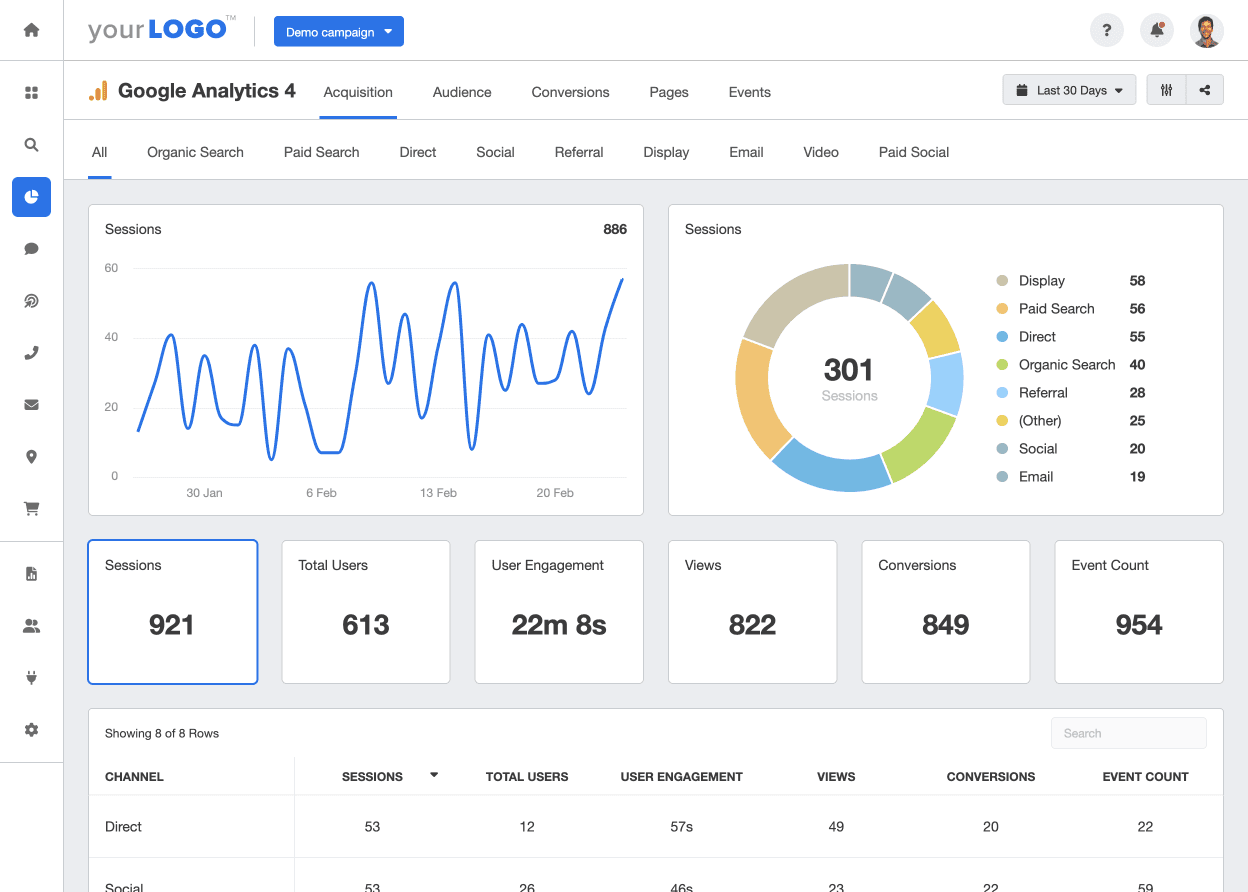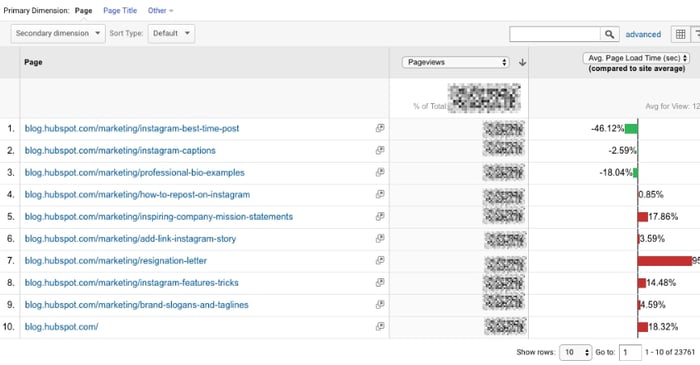Enhance Your Search Engine Optimization Method With Effective Google Analytics Tracking Code
Integrating Google Analytics tracking code right into your Search engine optimization strategy is a critical step toward attaining quantifiable outcomes. What specific techniques can you embrace to optimize the influence of this information on your Search engine optimization initiatives?

Comprehending Google Analytics Fundamentals
To efficiently leverage Google Analytics for Search Engine Optimization, it is necessary to grasp its fundamental concepts. Google Analytics functions as a powerful device for tracking and assessing site web traffic, supplying understandings that are essential for enhancing search engine efficiency. At its core, the system allows customers to monitor user actions, traffic resources, and key efficiency indications (KPIs) such as bounce prices and session durations.
Knowledge with the interface is essential. Key sections consist of the Target market, Purchase, and Actions tabs, each offering useful information. The Audience section provides demographic insights, aiding to tailor material to target customers effectively. The Acquisition tab discloses how visitors come to the website, whether through organic search, paid advertisements, or social media, assisting critical adjustments in advertising initiatives.
Understanding metrics such as organic web traffic quantities and conversion rates is vital for reviewing search engine optimization effectiveness. Ultimately, mastering these basics permits digital online marketers to harness the full capacity of Google Analytics, driving notified decisions that enhance overall search engine optimization strategies. By developing a strong structure, organizations can properly assess their performance and determine opportunities for enhancement in their on-line existence.
Establishing Tracking Code
Appropriately establishing the tracking code is essential for accurate information collection in Google Analytics. The very first step involves creating a Google Analytics account and home, where you will receive an one-of-a-kind monitoring ID. This ID is necessary for linking your web site's data to your Google Analytics account.
As soon as you have your monitoring ID, integrate the tracking code bit into your site's HTML. This is normally put in the header section of each web page to guarantee it loads early in the web page providing process. If you're making use of a Material Management System (CMS) like WordPress, several plugins simplify this procedure, enabling you to add the tracking code without direct HTML editing and enhancing.
After executing the tracking code, it is essential to evaluate its functionality. You can utilize the Google Tag Assistant device to verify if the monitoring code is correctly set up and working. In addition, keep an eye on the real-time reporting attribute in Google Analytics to verify that information is being collected properly.
Ensuring that the tracking code is appropriately set up lays the structure for efficient data analysis, enabling you to make educated decisions to boost your SEO approach and general site performance.
Key Metrics to Monitor
Recognizing crucial metrics to keep track of is crucial for comprehending the performance of your search engine optimization approach with Google Analytics. By concentrating on specific information factors, you can assess the effect of your optimization initiatives and make notified decisions to enhance efficiency.
One of the main metrics to track is natural web traffic, which indicates the variety of site visitors coming to your site via search engines. This statistics reflects the overall wellness of your search engine optimization approach. Next off, monitor the bounce rate, which reveals the portion of site visitors that leave your website after checking out just one web page. A high bounce price may indicate that your material is not satisfying my sources individual expectations or Our site that your touchdown web pages need enhancement.
Additionally, consider tracking conversion prices, as these metrics disclose how well your site meets its business goals, such as generating leads or sales. Keyword positions are likewise vital; surveillance changes in keyword positions aids evaluate the effectiveness of your targeted SEO initiatives. Finally, assess the ordinary session duration, which suggests customer engagement and content importance. By closely following these vital metrics, you can get beneficial insights right into your SEO technique's efficiency and identify areas for improvement.
Studying User Actions
Understanding user behavior is important for fine-tuning your Search engine optimization technique and making the most of site performance. Google Analytics provides a wealth of data on customer involvement metrics, such as bounce prices, time on site, and page views per session.
In addition, tracking user circulation can expose usual navigation courses, highlighting potential traffic jams or locations for renovation. Comprehending the demographics, interests, and geographic places of your site visitors enables for even more tailored web content that speaks with their demands. Using segmentation features in Google Analytics further improves your capability to analyze individual habits by enabling you to contrast various audience teams.
Moreover, monitoring conversion prices and user activities can offer understandings into the effectiveness of your telephone calls to action and total site layout. This all natural view of customer actions is essential for making educated choices that improve user experience and drive higher engagement, eventually adding to enhanced SEO performance.
Leveraging Insights for SEO
Consistently leveraging understandings obtained from customer behavior evaluation can considerably enhance your search engine optimization initiatives. By using Google Analytics, you can identify key metrics such as bounce rates, session duration, and customer flow, which reveal just how visitors communicate with your web content. These understandings enable you to Visit Website determine locations needing renovation, such as high departure web pages or underperforming keywords.

Additionally, tracking organic website traffic sources provides clarity on which networks are most effective, allowing you to allocate sources purposefully (when does the google analytics tracking code send an event hit to analytics?). By assessing conversion rates alongside web traffic information, you can recognize which web pages drive real service results, refining your SEO approach further
Integrating these insights right into your material strategy not just enhances visibility however additionally promotes a much more user-centric approach. Ultimately, a data-driven SEO approach educated by analytics not just improves positions yet additionally straightens your goals with user expectations, leading to sustained development and engagement.
Conclusion
Reliable application of Google Analytics tracking code dramatically improves a search engine optimization approach by giving important understandings into individual actions and website traffic sources. Monitoring key metrics such as natural traffic, bounce rates, and conversion rates facilitates the identification of enhancement locations. Furthermore, assessing customer demographics and involvement metrics permits an extra targeted content strategy. Eventually, leveraging these insights contributes to fine-tuning SEO efforts, driving even more pertinent traffic, and improving total internet site efficiency.
Including Google Analytics tracking code right into your SEO approach is a crucial action towards attaining measurable outcomes. At its core, the system enables customers to check individual behavior, web traffic resources, and vital efficiency indications (KPIs) such as bounce rates and session periods.
Understanding customer habits is vital for improving your SEO strategy and maximizing site performance.Consistently leveraging insights acquired from customer behavior analysis can dramatically enhance your Search engine optimization initiatives.Efficient implementation of Google Analytics tracking code considerably improves a SEO method by giving essential insights right into user habits and website traffic sources.